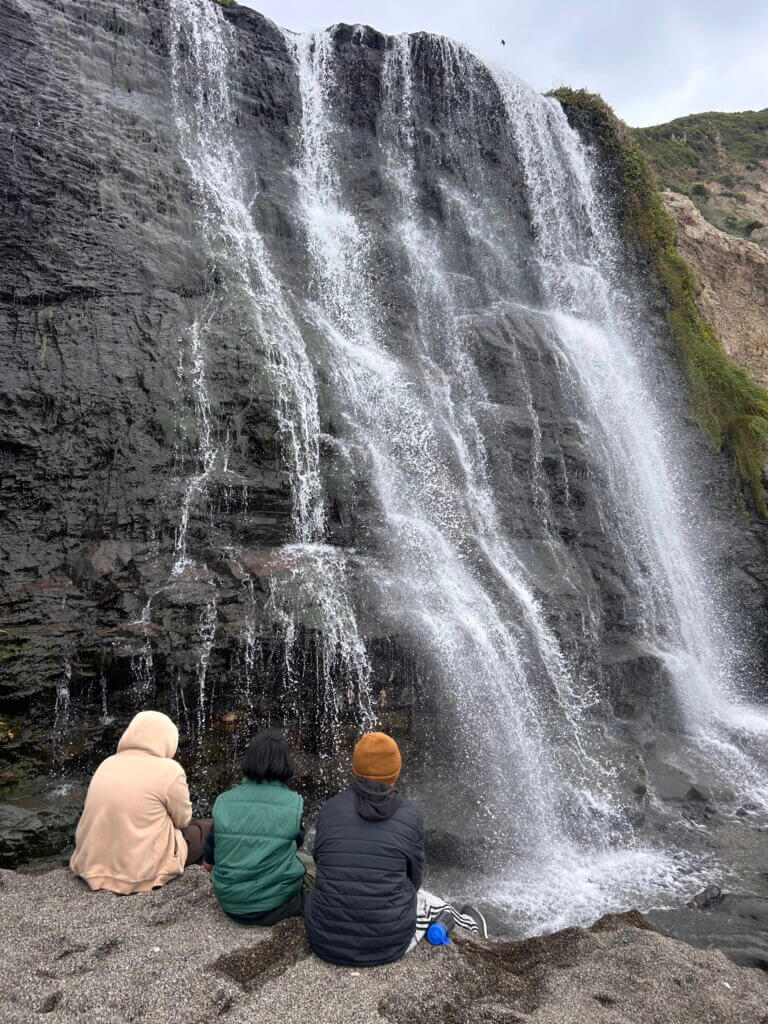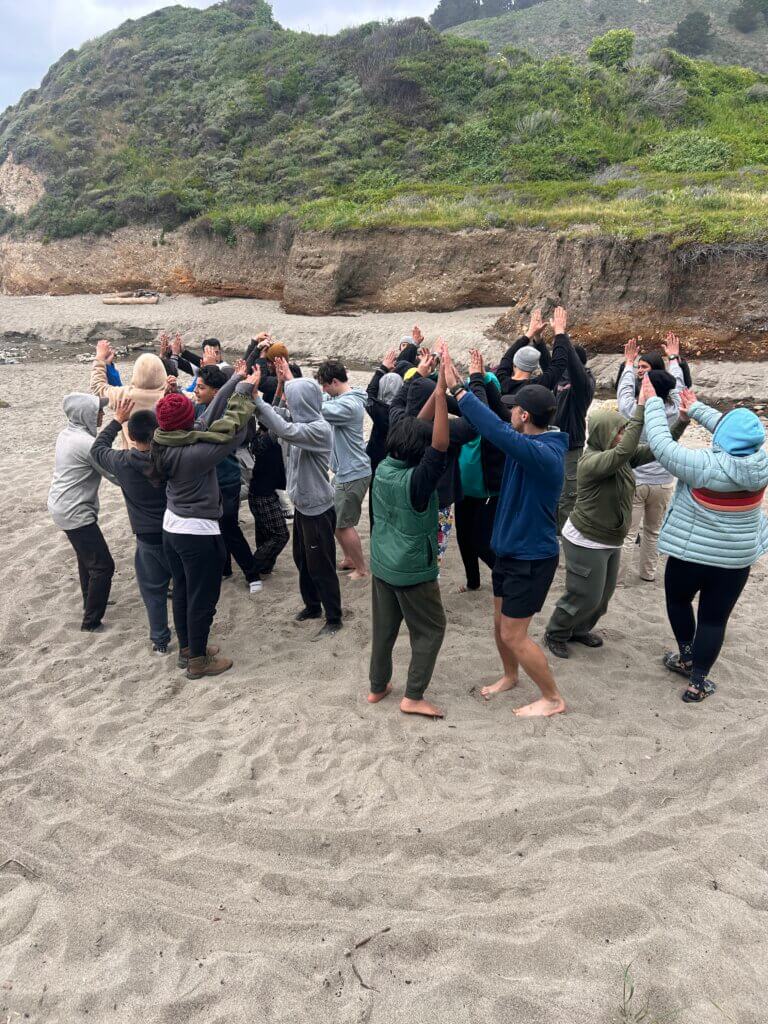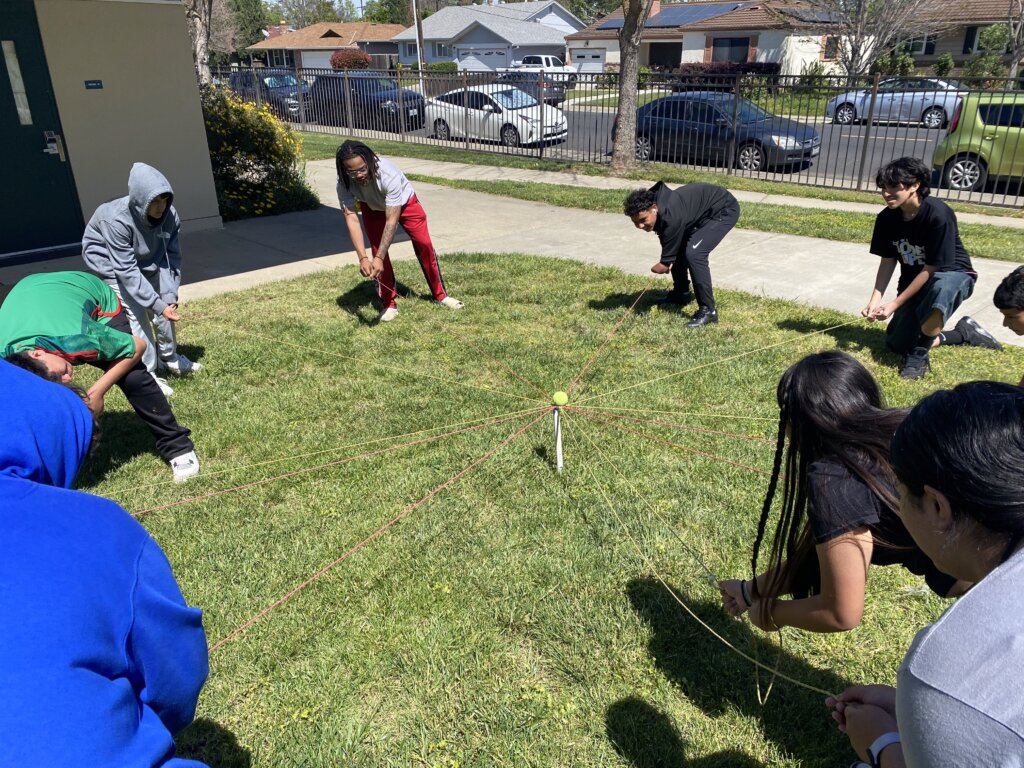How Green Light Get Outside Is Expanding Access to Outdoor Learning

When I think about the students we serve at Green Light Get Outside (Green Light GO), I think of resilience—often forged by necessity—and of untapped potential. I think of young people who live fifty miles from the Pacific Ocean but have never seen it.
At Green Light GO, we don’t just create opportunities to connect with the outdoors. We help young people see themselves as belonging in it. As stewards, learners, leaders. We believe access to nature is a right, not a privilege. Our mission is to empower underserved youth through transformative experiences in nature, dynamic outdoor learning, and long-term mentorship. We partner with schools to connect students, especially those from historically excluded communities, with the outdoors in meaningful, lasting ways. For our students, outdoor learning isn’t a break from the classroom—it’s a lifeline. A chance to breathe, to be seen, and to discover new ways of learning and leading. Many of our students carry invisible burdens: food insecurity, housing instability, caregiving responsibilities, trauma. These can make it hard just to show up, let alone thrive in traditional classrooms. Nature offers something different: presence, wonder, and connection.
On a recent trip, a seventh grader stood atop a coastal bluff at the Point Reyes National Seashore, staring out at the Pacific. Their words stick with me: “I didn’t know I needed this.” It was their first time backpacking, sleeping under stars, hearing waves crash in the darkness. That day, they didn’t just pitch a tent or identify and alert their peers to poison oak. They explored with courage and curiosity. These moments—where awe becomes agency—are central to our work. And to a vision of a California where every student, no matter their background, can grow through nature.
Nature as a Teacher, Mentorship as a Mirror

Outdoor learning isn’t an extra at Green Light GO. It’s our foundation. Whether on multi-day backpacking trips or team-building challenges on school grounds or in local parks, students learn about nature and themselves through place-based, hands-on experiences.
Equally essential are the people walking beside them. Our mentors aren’t mountaineers or outdoor experts. They’re young adults from similar backgrounds, often exploring these spaces for the first time themselves. Many are first-generation college students. They are emerging leaders who bring cultural humility, shared experience, deep listening, and a willingness to learn together. Their presence says, “You belong here!” You don’t need to be an expert. Curiosity and courage are enough.
This form of mentorship flips the script as mentors and students learn side by side. They face challenges, reflect, grow, and celebrate—together. We work hard to see students return as peer mentors, guiding new participants through the same journeys. Leading hikes, facilitating reflection, creating community. Some once thought nature wasn’t for them. Now, they are role models in borrowed hiking boots.
California’s wild places are vast and beautiful, but not equally accessible. Under-resourced schools rarely offer outdoor learning. Many youth of color, immigrant youth, and low-income families grow up surrounded by the unspoken message that nature “isn’t for them.” We work to dismantle that message—and the systems behind it. Our curated gear library allows us to create inclusive experiences where young people can explore, belong, and grow. This is about more than hiking and snowshoeing. It’s about their right to imagine new possibilities. Outdoor learning helps students reconnect—with nature, with community, with themselves. It fosters resilience, improves mental health, and increases engagement. For many, nature becomes a place they feel truly seen—not in spite of who they are, but because of it.
Reclaiming Outdoor Time in a Digitally Saturated World

Today’s youth spend an average of seven hours a day on screens—often indoors, often alone. While technology brings many benefits, it also makes us more sedentary and contributes to anxiety, isolation, and negative health outcomes. The pandemic only deepened these challenges, especially for students without access to safe outdoor spaces.
At Green Light GO, we are helping to restore balance. We invite students to unplug from devices, from pressure, from narrow definitions of success. Nature demands presence. It requires all of the senses, sparks curiosity, invites reflection. It teaches students to focus—on the rustle of leaves, the rhythm of breath, the crunch of snow under foot, the quiet strength of community by the ocean’s edge.
Our work thrives on collaboration. We partner with teachers to create outdoor learning that connects to curriculum and to students’ lives. We’re proud to be part of a movement, alongside Ten Strands and the California Campaign for Outdoor Learning, to make nature-based learning part of public education. We’re showing that outdoor learning doesn’t need to be difficult. It needs to be intentional. Rooted in community. Centered on equity.
Looking Ahead

The diverse challenges that our students face are real. Outdoor learning and mentorship offer more than relief; they offer revelation. We watch hesitant students become confident guides and see youth who felt invisible become grounded leaders. They return changed—with stronger voices, deeper questions, and renewed purpose.
As California commits to outdoor learning for every student, we’re committed to shaping what that looks like—especially for those historically left out. The vision is simple and bold:
Every young person belongs in nature. And outdoor learning is a powerful tool for all. When students connect with the land and each other, they don’t just learn about the world—they’re exploring their place in it.
Join us.
Whether you’re an educator, policymaker, parent, funder, or potential partner, your voice can help make sure outdoor learning isn’t a privilege for a few but a promise kept for all.

Green Light GO student celebrating success and resting on a snowshoe trip in the Lake Tahoe National Forest


2 Responses
What an inspiration, Jason! Thanks for your spirited work, and for taking the time to write about it so that everyone knows this is possible and replicable. Now…I have so many questions! So many outdoor organizations have a hard time “getting into schools.” How do you establish these deep partnerships with schools and districts? Do you need to have credentialed teachers on your staff? Since your mentors are young people from the same community as your students, do you provide “professional” mental health or counseling support for the students and/or the mentors? Who provides that? If funding were available, could Green Light GO scale up, or would it be better for other organizations to replicate what you do? Can I join one of the trips to Wildcat Beach? I think you might have to write a sequel in another Newsletter!
Craig, thanks for the kind words!
Here are some fairly long answers to your thoughtful questions.
Developing relationships with schools takes time and consistently showing up. It starts with an introductory relationship and then is strengthened over time through collaboration that creates impact for students and the whole school community. Our school partners most often see the impact in a pilot year and then identify other schools in their District that would like the program, or want additional classes at existing sites. Our challenge is not growing too fast to out pace our gear library or ability to attract and retain high quality mentors in the region. That said, if the funding were available, we are confident we could help and support inspired others to implement our playbook and serve similar students in almost any region of the country.
We do not have credentialed teachers on our staff. Our staff collaborates with a credentialed teacher at each school site who agrees to teach our Curriculum as an Elective Course and engage with the mentors that we recruit and train. We train teachers in the summer and provide ongoing support with curriculum delivery and mentor training & support throughout the year. Our Program Coordinators work side by side with the teacher in the classroom; supporting students, co-facilitating powerful discussions, leading team-building activities, and managing the logistics for the trips and the gear library. We have worked to build a foundation to support teachers who are willing to take on a challenging assignment, by building systems and a support team that make it manageable and prevent burnout of a commited teacher taking on more than one person could possibly do alone.
Our mental health supports extends to our whole team, including students, staff, and mentors. We currently have a 3 year grant that allows us to embed an LMFT regularly into classrooms, on trips, and in support of our students, mentors, and staff. Our mentors also have the opportunity to meet twice monthly, as a cohort, with our staff LMFT and another volunteer LMFT who facilitate mentor support meetings that include wellness check-ins, small group peer discussions, and trainings on self-care, counseling skills, and mentorship strategies.
And to your final question, we are always looking for qualified chaperones for trips. I so appreciate your interest! I highly recommend it. It really is a blast and a unique experience to support young people and our mentors on these powerful trips. We employ a thorough screening and interview process, and all volunteers must pass a LiveScan background check in the District of every student attending any trip they chaperone. There’s an application on our website to volunteer – https://glgo.org/volunteer/